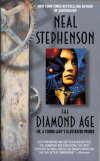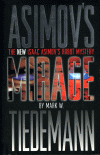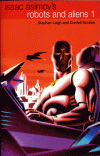After reading the Cobra Strike Trilogy, I was glad to be getting back to a more recent book by Timothy Zahn. Angelmass is about a small group of human worlds on the edge of the Galaxy dubbed “The Empyrean” that sprouted up near a very peculiar black hole. They eventually discover that this no ordinary black hole, if it is one at all. They named it Angelmass because it emits “angels” that when harvested can affect the behavior of humans that are near them. They make humans act honorably, when otherwise they might have tendencies otherwise. Soon the government requires that all politicians wear an angel around their neck so that everyone knows they will be trustworthy.
The largest human Empire, the Pax, was content to leave the Empyreans alone until they learned about the angels. They started to view the angels as an alien influence that must be stopped. They recruited Jeriko Kosta, an accomplished academic, to infiltrate the well known Angelmass Institute to find out more details on the nature of these angels. The book opens with Kosta boarding the Komitadji, the largest Pax warship in existence. It is the pride of the fleet, much larger than any other ship. I would compare this to the Darth Vader’s Super Star Destroyer, the Executor.
Zahn creates a rather interesting approach to space travel. Ships travel through hyperspace across long distances, but with a twist. He goes into quite a bit more detail than just putting a simple hyperspace drive inside ships. The hyperspace travel in this book is done via “catapults.” They are essentially groupings of space stations that focus a field that envelops a ship and sends it across space. The ship is then pulled out by a similar arrangement of ships at the other end called a “net.”
Kosta is ejected from the Komitadji in a ship disguised as an asteroid. The Komitadji is catapulted to a distant star system by Empyrean defense forces. Kosta’s mission begins and the Pax commander begins preparations for the real invasion. On his way to the Angelmass Institute, Kosta encounters the other main character, Chandris Lelasha. She is a 16 year old girl, and professional con artist, running from a crazy ex-boyfriend from Earth. Jeriko and Chandris part ways when arriving on Seraph, the planet that hosts the Angelmass Institute and the main base of operations for “angel” harvesting. Separately, Arkin Forsythe has been elected as High Senator, but is very skeptical of angels. He arranges to have a fake angel made so his actions aren’t influenced. He is convinced that angels are making humans too passive.
The three main plot lines of Jeriko, Chandris, and Arkin run parallel for the most part, but intersect at various points. I appreciated how Zahn shifts around through the different characters. He doesn’t spend too much time in one place, and the chapters are rather brief. This suited me well because I do most of my reading on my lunch break. I really hate having to stop in the middle of a chapter, so this book was perfect in that respect. Also, it seems that I’m not the only one that feels this book is rather similar to Manta’s Gift. In both books, the main character is thrust into another culture/alien society and finds his allegiances tested. The true nature of his mission is not clear until the end.
I would rate this book about as high as Icarus Hunt and Manta’s Gift. All three were very enjoyable, and in my opinion much better than the Cobra Trilogy. Zhan has definitely improved his writing over the years. I’m considering re-reading the Thrawn Trilogy sometime after I get through the rest of my “new” books waiting on my shelf for me to finish.



